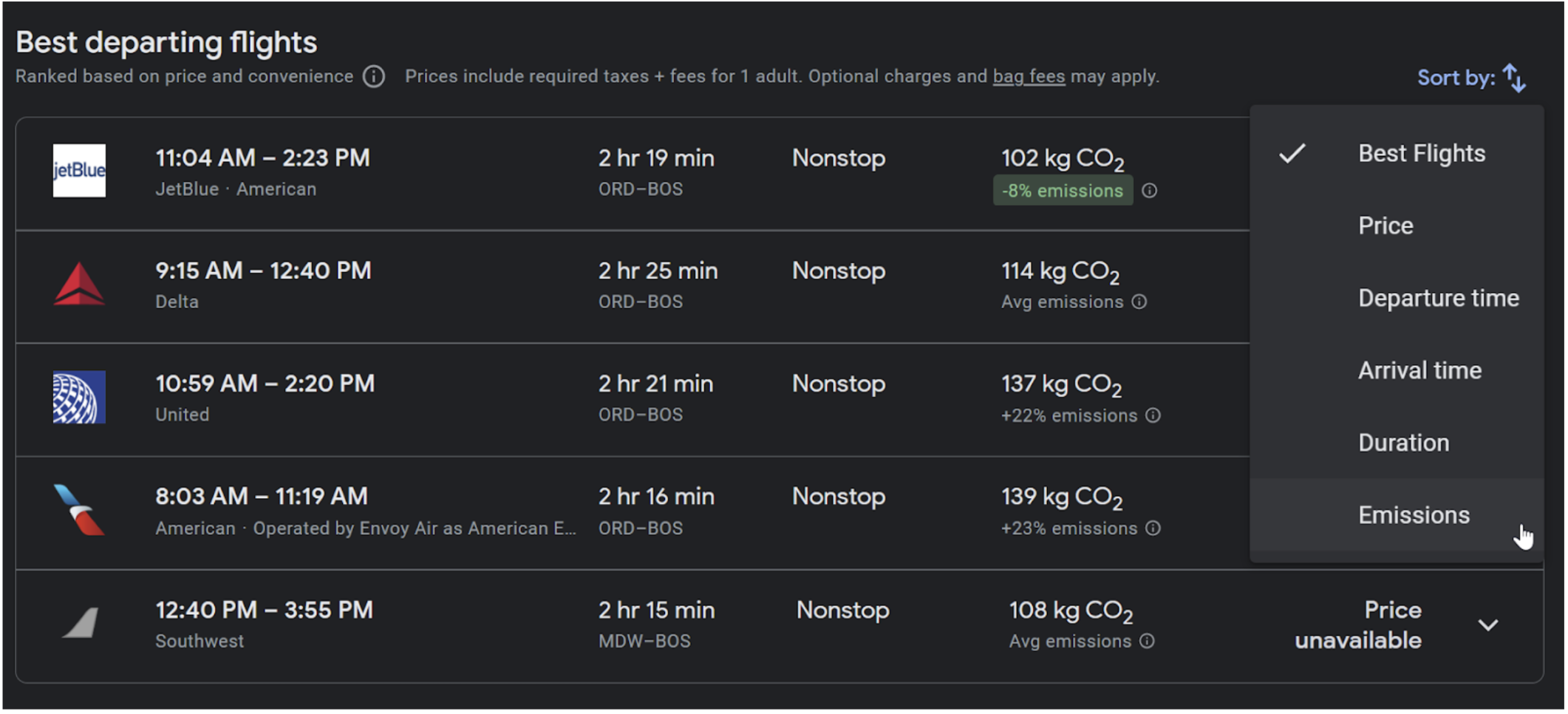Travel Tips for In-Person Attendees
Thank you for joining the 2025 MIT Sustainability Summit! If you are traveling from outside the Boston-Cambridge area, we wanted to provide you with some resources and guides to help minimize your footprint in attending this conference. Our goal is to make minimizing your footprint as straightforward as possible and familiarize yourself with the lower-footprint transportation alternatives available in the Boston-Cambridge area.
Local travel:
This includes leaving your primary residence to get to a long-distance transportation hub (ie. airport, train/bus station, etc.). We recommend the following (in order) based on their carbon footprint intensity, as studied by Our World In Data:
Walk
Bike
Public train
Public bus
Carpool in a compact car (EV or gasoline) (2-4 passengers)
Self Drive (EV or gasoline)
To help in reducing your footprint, if some of the top options are not available or realistic to you, we recommend using UberGreen to minimize emissions traveling to/from the summit.
Boston-Cambridge travel:
Once in the Boston-Cambridge area, there are many alternatives for low-carbon transportation throughout the city, including (in order):
Walk
Bike
Public Train/Bus (MBTA has a convenient path trip planner to suggest routes)
Carpool in a compact car (EV or gasoline (2-4 passengers)
Self Drive (EV or gasoline)
Should some of the top options not be available or realistic to your schedule, we recommend using UberGreen to minimize emissions traveling to/from the Summit.
Lodging:
We recommend lodging close by to the summit location (MIT Samberg Conference Center, 50 Memorial Dr, Cambridge, MA 02142) for your convenience and to reduce the amount of carbon footprint associated with transportation to the summit. A list of hotels within walking distance can be found here:
Boston Mariott Cambridge
Residence Inn by Mariott Boston Cambridge
The Kendall Hotel
The Royal Sonesta
Le Meridien Boston Cambridge
The Liberty Hotel
Sonder 907 Main
Long-distance travel:
Our World in Data also helps guide your transportation options for long-distance travel (in order):
Public Train (Amtrak has a nationwide map of routes and lines that head into Boston)
Public Bus (Greyhound, Jefferson Lines, Peter Pan, OurBus, etc.)
Carpool in a compact car (EV or gasoline (2-4 passengers)
Air travel (preferred versus driving if traveling over 600mi)
For air travel:
We recommend taking direct air travel given on average it can save 100kg/pax in CO2-equivalent emissions. Google Flights has a convenient note for emissions estimates for each flight and allows one to sort by emissions (see screenshot below).
References:
Ritchie, Hannah. “Which Form of Transport Has the Smallest Carbon Footprint?” Our World in Data, Our World in Data, 13 Oct. 2020, https://ourworldindata.org/travel-carbon-footprint#:~:text=Overall%2C%20the%20most%20efficient%20ways,your%20emissions%20by%20~80%25.
Debbage, Keith G, and Neil Debbage. “Aviation Carbon Emissions, Route Choice and Tourist Destinations: Are Non-Stop Routes a Remedy?” Science Direct, Annals of Tourism Research, 4 Sept. 2019, https://www.sciencedirect.com/science/article/abs/pii/S0160738319301227?via%3Dihub.

